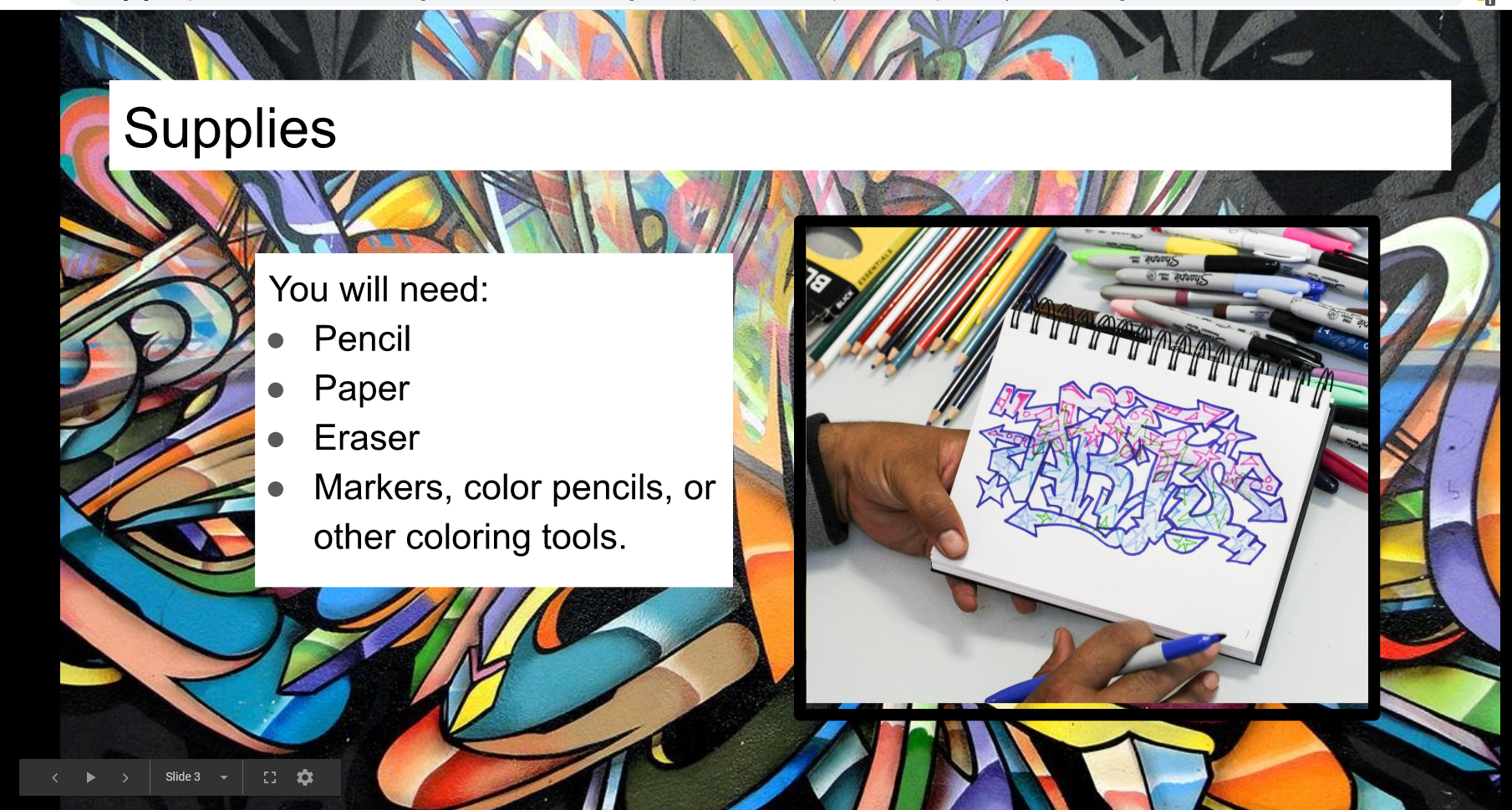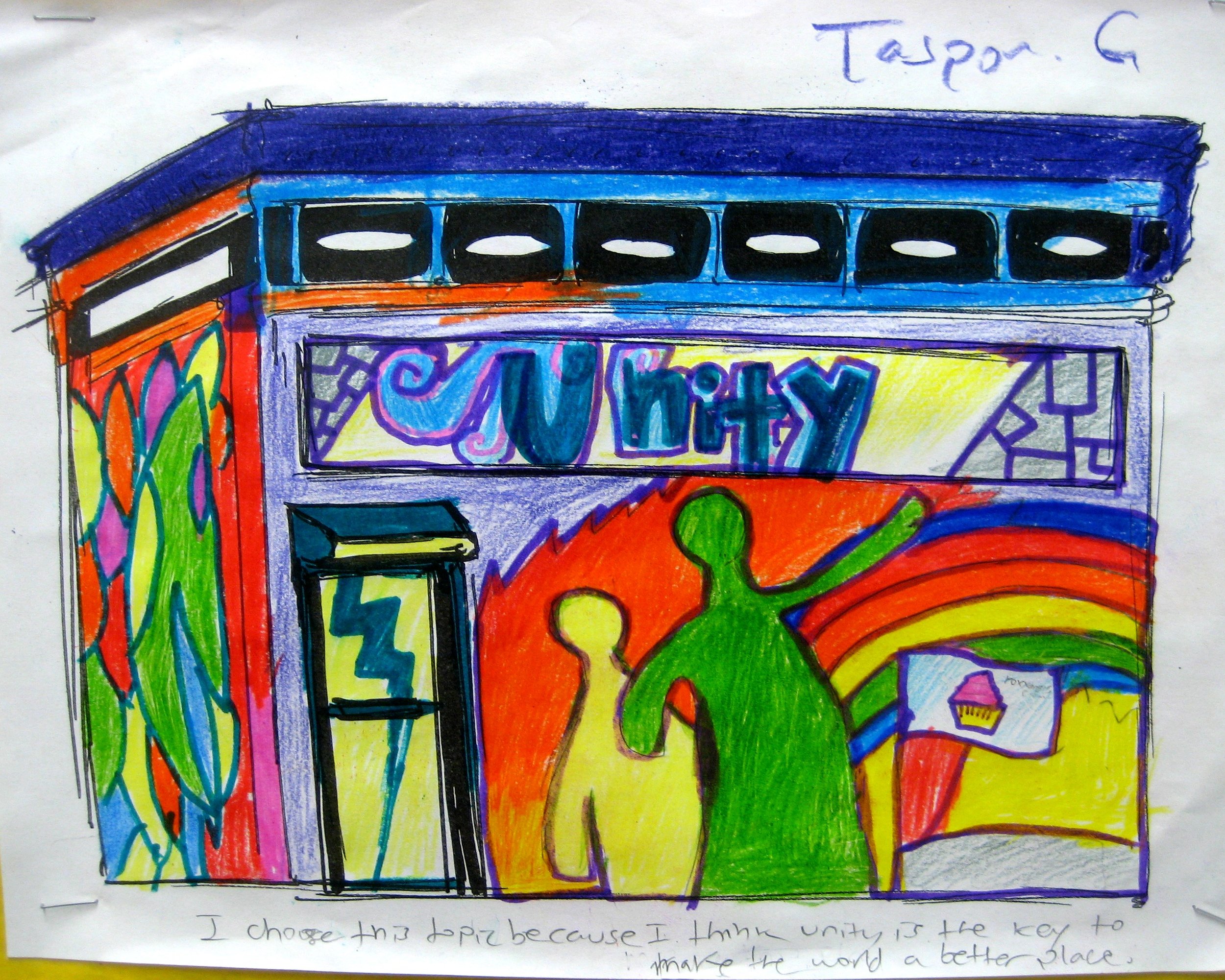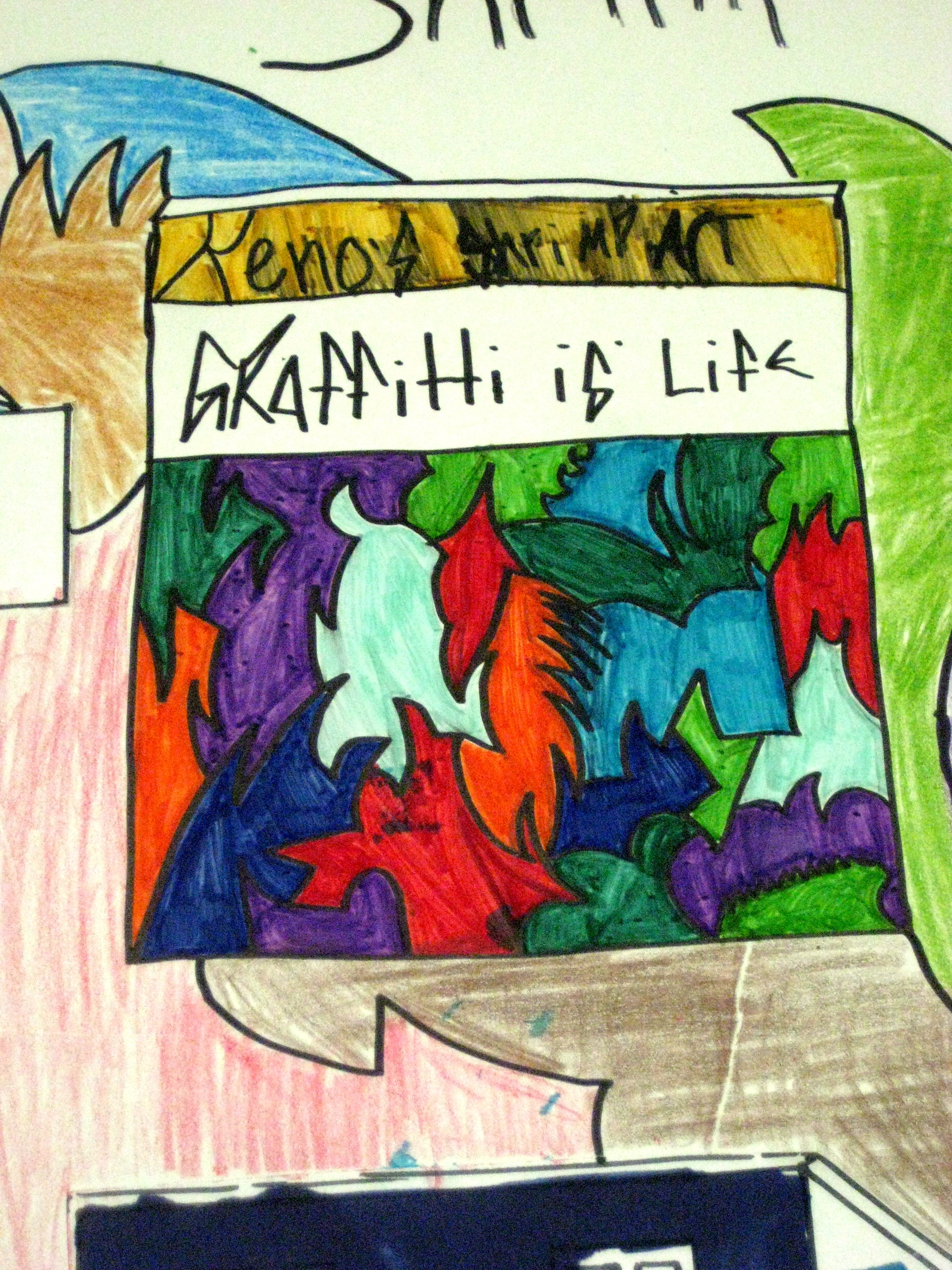Sign up for our email list to learn about upcoming opportunities!
This page has lessons that you can use on your own or in your classroom. We will have more lessons and resources available for the classes that we partner with. Let us know if you want to learn more.
The Facts ::: Information about graffiti laws and artist rights in San Francisco. Painting without permission can be a crime that is punished, but if you have permission, you have rights and protections as an artist.
Street art photo scavenger hunt ::: Notice the art you see in the streets of your neighborhood and collect pictures of the art you would like to discuss with your classmates. Our slideshow will help you recognize some of the types of art you might see.
Practice your fills ::: Printable coloring pages and a slide show so you can collaborate with esteemed local artists about the core principles of Hip Hop culture.
How to draw Graffiti style lettering ::: Step-by-step instructions about how to draw a funky graffiti style letter.
How to draw a Graffiti style word ::: Instructions for drawing a word in graffiti style.
Design your neighborhood ::: Use our printable worksheet and coloring pages to design a neighborhood on your own or with a group of classmates.
Scribble Your Feelings ::: A lesson about using art to access our emotions, and using our emotions to make meaningful art. This lesson requires no artistic skill. It can help you release your stress and trauma and then tell a story about your feelings.
Using your sketchbook ::: Videos and a slideshow about how artists use their sketchbooks.
Where Art lives video resources ::: Browse our library of videos about graffiti history, technique, and the role of graffiti in our neighborhoods.
More resources ::: A self-assessment rubric for students who use art to explore any topic, and links to lessons from other creators.
Community Art Challenge - a final project ::: Once you’ve developed your artistic style and skills as a graffiti artist, how will you use your art to uplift your community?
The Facts
What are the laws about graffiti and public art in San Francisco?
What rights do you have as artists?
We offer two versions of our fact sheet in PDF form here. One is a little shorter, the other is a little more detailed.
Both versions end with the discussion/writing prompt: “Are these rules fair? When you and your classmates are in charge, what rules will you make for your neighborhood?”
We would love to hear about the ideas your class comes up with!
What do you and your classmates think of the paintings you see on walls in your neighborhood?
Look at the samples on this slide, answer the questions, and discuss!
Street Art Photo Scavenger Hunt
Find examples of graffiti, murals, and other types of street art to discuss with your classmates. Collect photos of at least three examples.
Most beautiful art.
Best art for the neighborhood.
Art that you have the most questions about.
We all have our own opinions about how to decorate out public spaces!
How does the art you see make you feel?
Practice your fills
Haga clic aquí para ver esta lección en español.
In graffiti art, a “fill” is all the colors and patterns you draw inside your letters. Don’t leave any space blank unless you choose to make it white. You can use our drawing pages to practice you fills. The core principles of Hip Hop are “Peace,” “Love,” “Unity,” and “Having Fun.” Show us what these words mean to you by coloring these pages in.
Find examples and add your own creations to this art gallery page.
We have a new slide show to use with this lesson that includes videos about Hip Hop history and about the artists who drew these coloring pages. Click here to see the slide show.






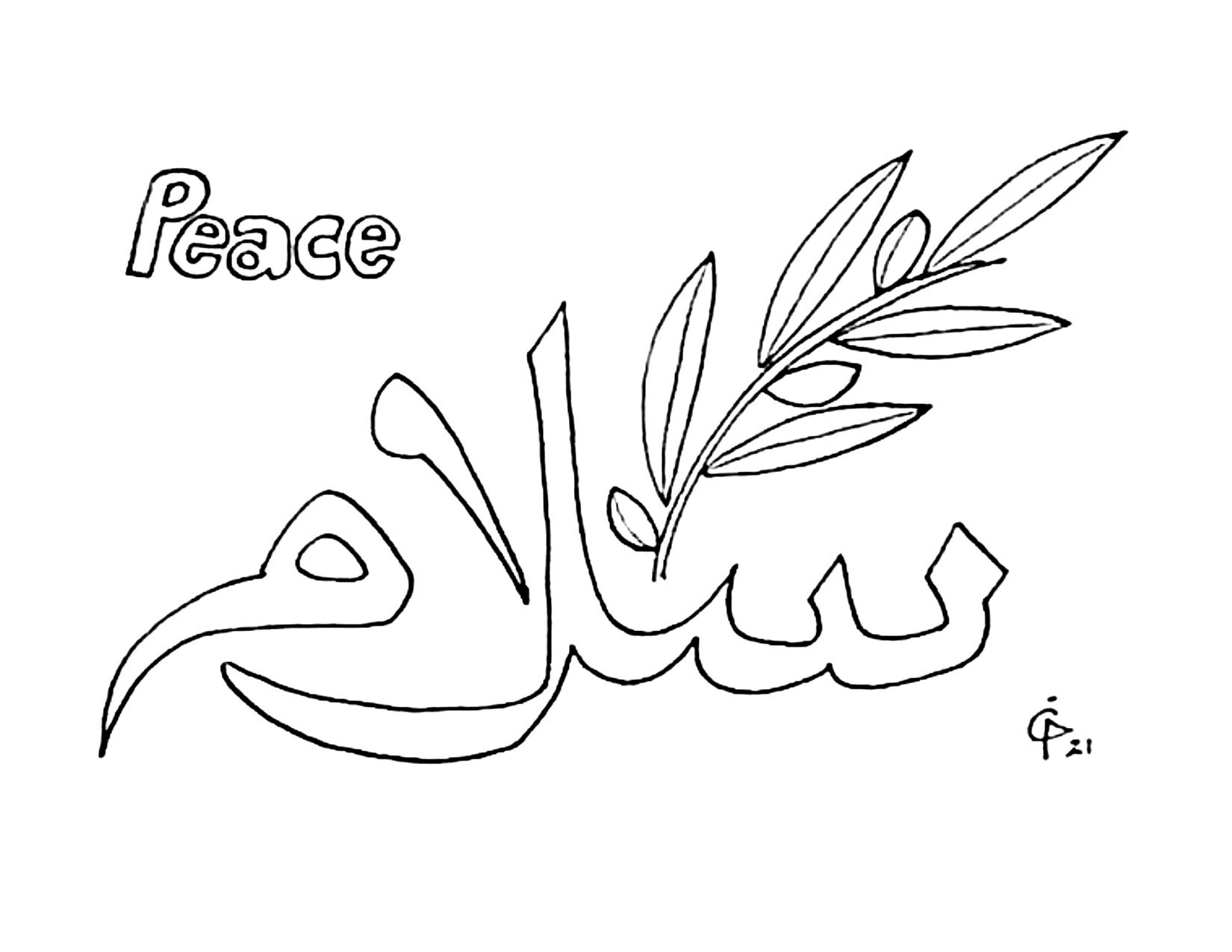


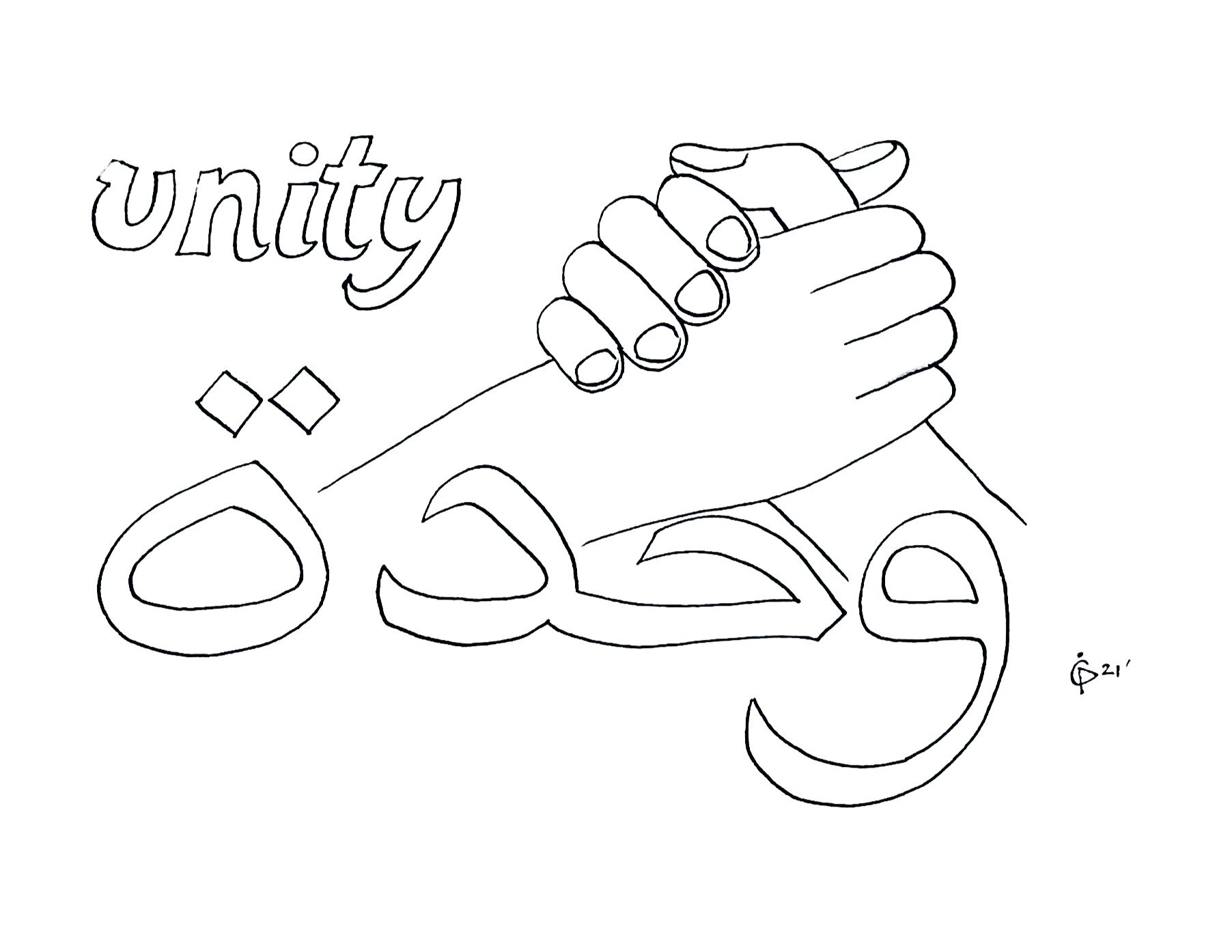





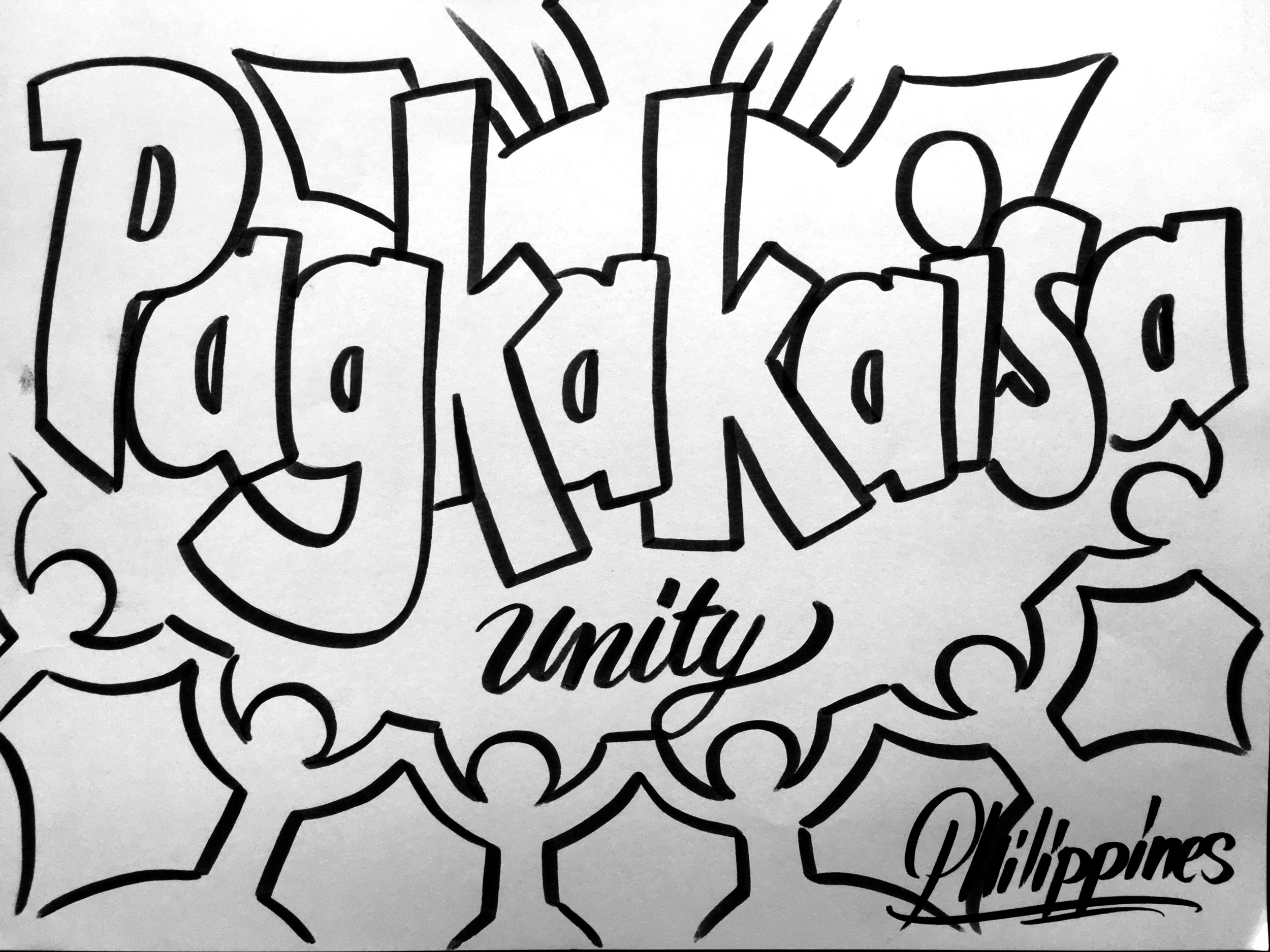
Print these pages and add your own fills. Show us what these words mean to you. Contact us or your local library if you don’t have access to a printer.
How to draw Graffiti style lettering
Launch a step-by-step slideshow.
Teachers: use the gear icon to turn on speaker notes, or download the speaker notes in PDF form.
Short attention span? Quick learner? This GIF shows all the steps for creating a graffiti style letter.
How to draw a Graffiti style word
Launch a step-by-step slide show.
This GIF shows all the steps of Joe drawing a graffiti-style word.
Design your neighborhood
When you are in charge, how will you decorate the public walls of your neighborhood? Here is a planning worksheet and drawing pages to design your own murals. Work with friends to create the neighborhood of the future.
See some examples in the gallery.
Scribble your feelings
In this lesson, use scribbling as an introduction to meaningful art-making and as a fun way to ease worry and anxiety. Then, use your scribble drawings as part of new narrative or symbolic art.
You can use this self-assessment rubric to give yourself a grade and make a label for your art - because the artist is the best judge of whether a work is successful.
This lesson is also available in video form. Find part one of “Scribble Away Your Worries” (6 minutes long) here and part 2 “How We Hold It” (16 minutes long) here.
When you’re done, you can add your art to our “Scribble Your Feelings” padlet art gallery here.
Using your sketchbook
Artists use sketchbooks to practice drawing, to develop our style, and to experiment artistically. Sometimes we use our sketchbooks to take a break from the world and keep ourselves sane. Graffiti artists call their sketchbooks “black books” and also use them to collect drawings from each other. Classes of San Francisco public school students can partner with us to get Where Art Lives sketchbooks for their students.
You can watch this video playlist of professional artists talking about how they use their sketchbooks.
Where Art lives video resources
June 10, 2021 workshop about Graffiti Art in San Francisco
We had a deep discussion about graffiti art in San Francisco in this online workshop covering topics including style, history, and the role of graffiti art in our neighborhoods. Read the description of the video on Facebook to find the segments you are looking for.
0:55 Definitions and property acknowledgments
7:40 - 9:15 Tion's graffiti art painting methods
9:45 - 11:20 Drawing lesson from Where Art Lives program
11:35 - 16:00 Nate's technique for graffiti drawing
16:00 - 17:10 Nancy's drawing process
20:20 - 48:30 History of graffiti art presentation by Nate
50:00 - 53:00 Tion talks about graffiti history
54:20 - Question about first graffiti art piece in San Francisco
58:15 - Question about graffiti in hard to reach places
59:30 - Nancy talks about her art
1:10:00 - Tion presents his art
1:20:00 - 1:30:00 How the artists' use their sketchbooks
1:30:40 - Question about "sticker bombing" and "wheat pasting"
1:35:49 - What challenges do you see with sharing graffiti art culture?
1:38 - The importance and challenges graffiti art legacy and education, and an apology from Tion
1:41:50 - Tion discusses graffiti art and gentrification in the Mission District
1:43:00 - When does graffiti help a community and when does it do harm?
1:56:45 - A call for the art to evolve
More resources
Students can deepen their learning by making art about any subject. Give students this all purpose self-assessment rubric so you can give them the credit they deserve for their creative inquiry. The link is to a view-only google doc which you can copy or download as a Word file to edit and customize.
San Francisco’s own Matt Christenson has shared some of his excellent lesson plans around using graffiti-inspired art to teach visual art fundamentals on the Art of Education website here.
Jessalyn Aasland, an artist and an educator at SFMoMA has created an amazing Class Set project. She commissioned local artists to illustrate posters with meaningful quotes. The posters are available for free to K-12 teachers. She also provides exceptional lesson plans for your students to create their own posters. This would be a great way for students to make use of their lettering skills.
When the San Francisco Museum of Modern Art put Diego Rivera’s Pan American Unity Mural on display, they also commissioned local artists to create new work for a Bay Area Walls exhibit in their free space. Each of these murals is a masterpiece, but we’re particularly excited about the “Reparations” mural by the legendary Emory Douglas. Be inspired by the interview of Douglas on the SFMoMA website and take advantage of all the resources that the SFMoMA educators are offering.
Robert Liu-Trujillo is a life long Bay Area resident. Always drawing, Rob grew up to be an artist falling in love with graffiti, fine art, illustration, murals, and children’s books. He speaks beautifully about how we can use art to learn about and celebrate our heroes.

This work is licensed under a Creative Commons Attribution-NonCommercial-ShareAlike 4.0 International License. You can use it, you can modify it, and you can share it - just don't try to make money from it and do let people know you found it here.








